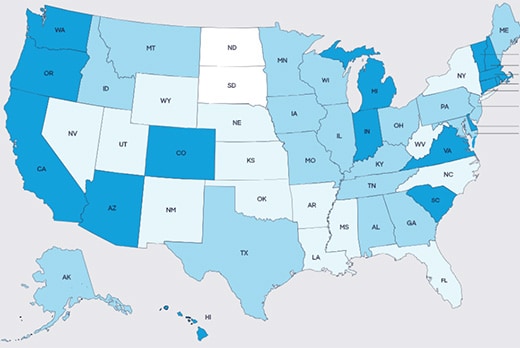Updated: Jun 07, 2023
Article highlights
- There are two types of federal student loans for undergraduate students: Direct Subsidized Loans and Direct Unsubsidized Loans.
- The loans replaced Stafford Loans.
- Subsidized loans are based on financial need and unsubsidized loans are not. Eligibility for Direct Loans is determined by the FAFSA®.
Direct Loans, which replaced Direct Stafford Loans, are the most well-known type of federal student loan. They are offered by the government, which means that the US Department of Education is the lender. There are two types of Direct Loans that undergraduate students can take out. Let’s take a closer look at subsidized vs unsubsidized loans.
Subsidized vs unsubsidized loans
A Direct Subsidized or Unsubsidized Loan is available to undergraduate students enrolled at least half-time at a participating college. They are part of the Federal Direct Student Loans program and replaced Stafford Loans.
Direct Subsidized Loans are available to undergraduate students based on financial need, which is determined by your family’s income as reported on the FAFSA (Free Application for Federal Student Aid). Direct Unsubsidized Loans are available to both undergraduate and graduate students and are not based on financial need.
| Direct Subsidized Loan | Direct Unsubsidized Loan | |
|---|---|---|
| Eligibility requirements |
|
|
| Interest accrual | The government pays the interest that accrues:
|
You are responsible for paying the interest for the entire life of the loan |
| Repayment | You aren’t required to make payments if you’re enrolled in school at least half-time | You aren’t required to make payments if you’re enrolled in school at least half-time |
| Grace period |
|
|
How do I apply?
To determine your eligibility for any federal student loans, you’ll need to first complete the FAFSA. The FAFSA must be completed each year you are in school and is available every year on October 1. Fill it out as early as possible, as some aid may be given on a first-come, first-served basis.
Beginning with the 2024-25 academic year, the Student Aid Index (SAI) will replace the Expected Family Contribution (EFC). Your SAI is determined by the information you provide on the FAFSA. It is a formula schools use to calculate how much financial aid you might be eligible to receive and is calculated by subtracting your SAI from the total Cost of Attendance (COA).
What are the interest rates?
All Direct Loans come with fixed interest rates for the life of the loan. When talking about subsidized vs unsubsidized loans, it’s important to note that interest accrues a little differently.
- Subsidized loans: The government pays the interest that accrues while you are enrolled in school at least half-time, during your six-month grace period, and during periods of deferment.
- Unsubsidized loans: You are responsible for paying the interest for the entire life of the loan. Making payments during school and the grace period can help reduce the amount of interest you'll ultimately pay. Interest rates for new loans can change July 1 from one school year to the next.
Are there any fees?
Direct Loans have origination fees, which are a percentage of the total loan amount and deducted from each disbursement. Like interest rates, origination fees for new loans can change October 1 for each school year.
How much can I borrow?
There are limits to how much you can borrow annually and in total over your academic career. These limits vary based on whether you are a dependent or independent student and generally increase depending on your year in school, so be sure to review the annual limits.
With that said, the maximum annual amount an undergraduate student can borrow in Direct Subsidized and Direct Unsubsidized Loans ranges from $5,500 to $12,500. Graduate and professional students can borrow up to $20,500 per year in Direct Unsubsidized Loans, but some may be eligible for Direct PLUS Loans to help cover the remainder.
How do I receive subsidized and unsubsidized student loans?
Whether you’re receiving a subsidized loan or an unsubsidized loan, the process for accessing Direct Loans is the same:
- Complete the FAFSA as soon as it becomes available in October.
- If you’re eligible for federal student loans, this information will be included in your financial aid award letter you’ll receive from your school.
- Follow your school’s instructions on how to accept all or part of your loans and how to apply for Direct Plus Loans.
When do I have to make payments?
Direct Loans come with in-school deferment, so you aren’t required to make payments as long as you’re enrolled in school at least half-time. There is also a six-month grace period that begins when you graduate or drop below half-time enrollment before repayment begins. You can choose to make payments during school and your grace period, which will help reduce the overall cost of your loan.
You can choose from several repayment plan options that range from 10 to 25 years, depending on amount borrowed and loan type.
FAFSA® is a registered trademark of the US Department of Education and is not affiliated with Discover® Student Loans.









